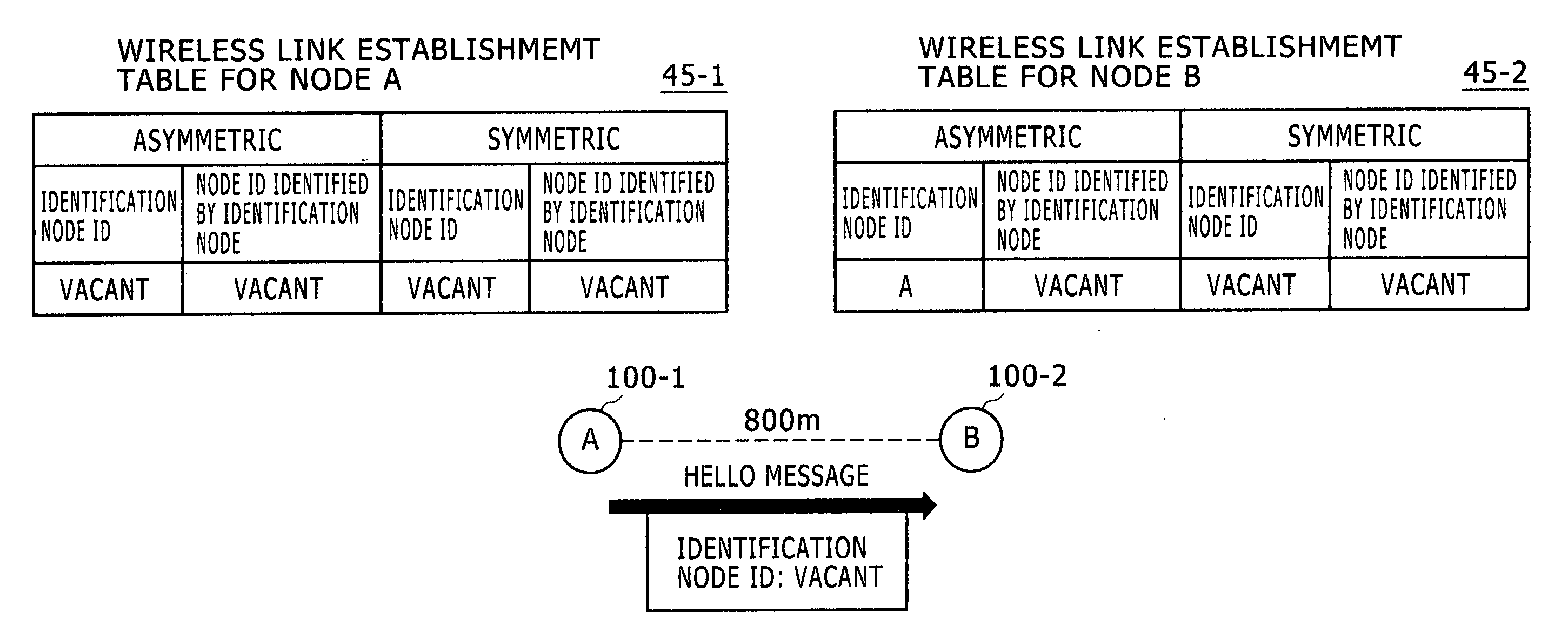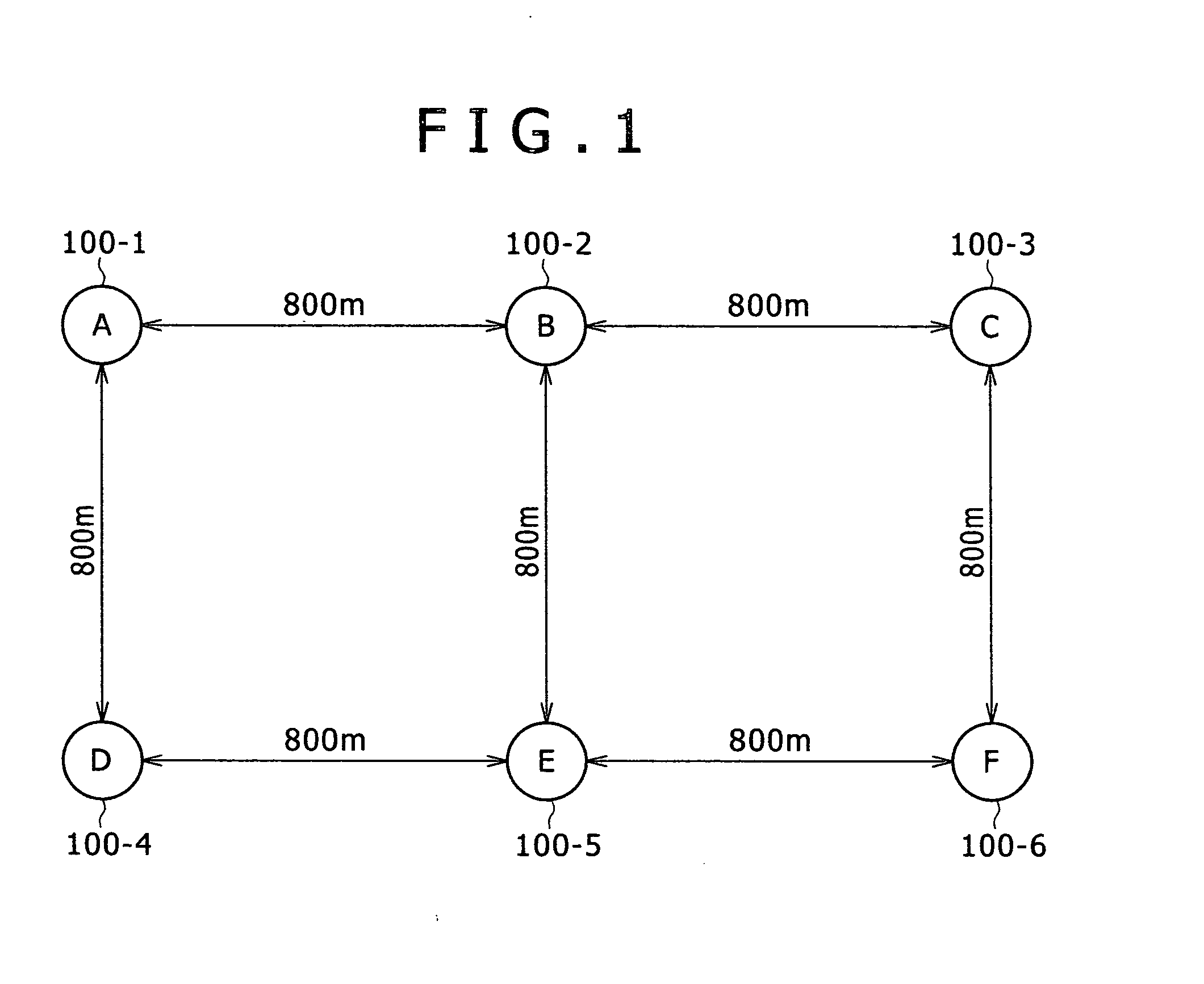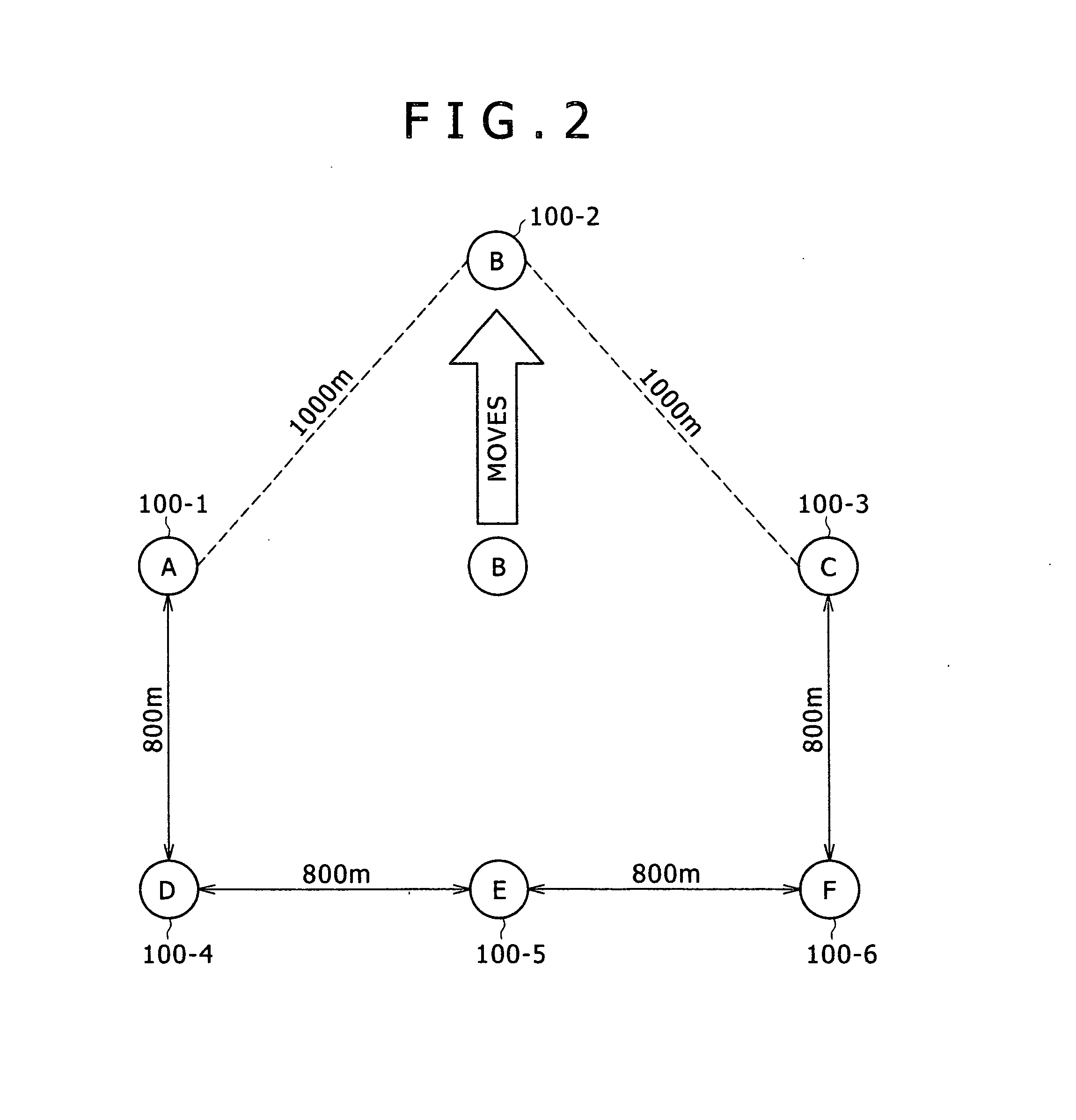Wireless communication apparatus
a communication apparatus and wireless technology, applied in the field of wireless communication apparatus, can solve the problems insufficient performance enhancement techniques, and the current available technology for ad hoc network architecture involves a number of unsolved technical problems, and achieve the effect of improving communication quality and simplifying communication
- Summary
- Abstract
- Description
- Claims
- Application Information
AI Technical Summary
Benefits of technology
Problems solved by technology
Method used
Image
Examples
embodiment 1
[0085]Embodiment 1 will be newly described below with reference to FIG. 15 through FIG. 20. FIG. 15 is a functional block diagram of a node. FIG. 16 is a hardware block diagram of the node. FIG. 17 and FIG. 18 illustrate the link establishment table of node A. FIG. 19 is a flowchart of processing of packet discarding. FIG. 20 illustrates the transmission queue of node A after the processing of packet discarding.
[0086]Referring to FIG. 15, a node 100 is configured of a wireless unit 1 including a wireless antenna 110 and a wireless signal transceiver 90, a packet transmission queue 60 which is a FIFO memory connected to the wireless unit 1, a packet transmission control unit 9 and an intra-queue packet control unit 2 connected to the packet transmission queue 60, a route information assigning unit 3 connected to the packet transmission queue 60, a route information storage unit 8 connected to the route information assigning unit 3 and the intra-queue packet control unit 2, a route in...
embodiment 2
[0096]Embodiment 2 will now be newly described with reference to FIG. 21 and FIG. 22. FIG. 21 here is a flowchart of rerouting, and FIG. 22 illustrates the transmission queue of node A after the rerouting.
[0097]When the network topology changes from the state of FIG. 1 to that of FIG. 3 via that of FIG. 2, the routing table of node A is switched over from that of FIG. 9 to that of FIG. 11. In Embodiment 2, the routing layer confirms the transmission queue at the ting of this switch-over of the routing table, and the queued data is rerouted.
[0098]Referring to FIG. 21, first the queue pointer is initialized (S21). Next, it is determined whether or not the queue pointer is longer than the queue length (S22), and if NO, the processing is ended. If YES at step 22, it is determined whether or not the forwarding IP address of Qdata is present in the routing table (S23). If YES at step 23, in order to check whether or not the data awaiting transmission within the transmission queue is consi...
embodiment 3
[0102]A case is supposed here in which a data transfer from node A to node C and a data transfer from node A to node D are taking place at the same transmission rate within the same period in a state in which the network topology is configured as shown in FIG. 1 and each node has its link established. Then the link establishment table of node A is as shown in FIG. 17.
[0103]When the network topology changes from the state of FIG. 1 to that of FIG. 3 via that of FIG. 2, node A will recognize link severance from node B. The link establishment table of node A after the link severance will be like FIG. 18, wherein node B is deleted. In this embodiment, at the timing of recognizing this link severance, the routing layer recognizes the transmission queue and replaces the forwarding MAC address of data which need not be transmitted with the MAC address of a link-established node. Details of the operations from the recognition of this link severance to the replacement of the forwarding MAC a...
PUM
 Login to View More
Login to View More Abstract
Description
Claims
Application Information
 Login to View More
Login to View More - R&D
- Intellectual Property
- Life Sciences
- Materials
- Tech Scout
- Unparalleled Data Quality
- Higher Quality Content
- 60% Fewer Hallucinations
Browse by: Latest US Patents, China's latest patents, Technical Efficacy Thesaurus, Application Domain, Technology Topic, Popular Technical Reports.
© 2025 PatSnap. All rights reserved.Legal|Privacy policy|Modern Slavery Act Transparency Statement|Sitemap|About US| Contact US: help@patsnap.com



